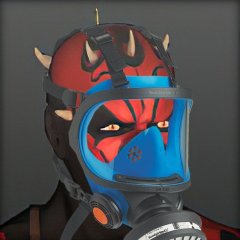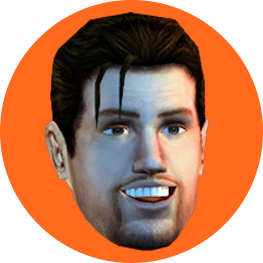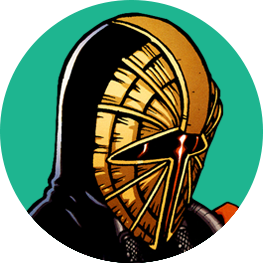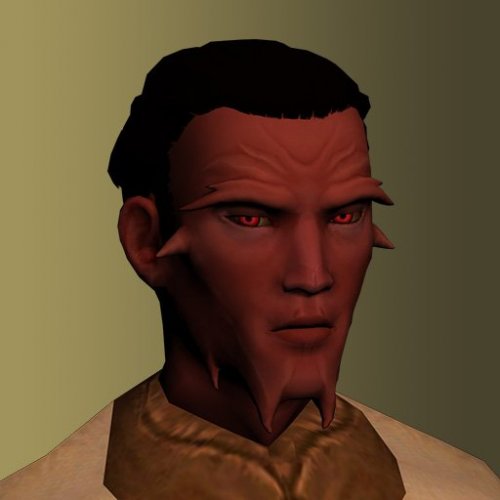-
Content Count
4,769 -
Joined
-
Last visited
-
Days Won
544
Content Type
Profiles
Forums
Blogs
Forum & Tracker Requests
Downloads
Gallery
Store
Calendar
Everything posted by DarthParametric
-

Freedon Nadd's Tomb Statue WIP
DarthParametric replied to VarsityPuppet's topic in General Kotor/TSL Modding
No need now. I was thinking about possible ways to get at the texture, but @ndix UR swooped in with those magic tools. That shouldn't be tricky from a mechanical perspective. It's a pretty simple animation. If you are planning to make something from scratch you could always just model it around something existing so you can swipe its animations. -
There'd be no point using an Edit Normals modifier currently. KOTORMax makes no use of Max's normal data. It only takes the smoothing groups.
-

Freedon Nadd's Tomb Statue WIP
DarthParametric replied to VarsityPuppet's topic in General Kotor/TSL Modding
Do you have a save in that room you can share? -

Freedon Nadd's Tomb Statue WIP
DarthParametric replied to VarsityPuppet's topic in General Kotor/TSL Modding
Here you go: fx_ritual01.7z -

Freedon Nadd's Tomb Statue WIP
DarthParametric replied to VarsityPuppet's topic in General Kotor/TSL Modding
What's the source? I can see "sith_ritual" which uses the "SithRitualEffect" placeable. It uses Fx_Lightning and fx_Smoke. Interestingly, fx_Smoke is a flipbook but has no TXI data. FX_Lightning_and_Smoke_Textures.7z -
Using an Edit Normals modifier at the top of the stack will let you unify normals along seams without affecting the skin. As I have discussed with bead-v before, this was the behaviour of the Dragon Age Origins Max I/O script.
-
Yeah the plan was to replace the vanilla mask. Like the Eradicator mask I'll have to make a new backface for it, as in TOR it's always used with the full head covering. Don't get your hopes up. Anything with capes or other flappy bits is probably too much trouble to deal with. I think they are meant to be, yeah. In TOR it is called "Restored Triumvirate" armour. But it's more like a K1 Sith Trooper body with a TSL Commando-style helmet. I was thinking of doing a variant using the vanilla K1 helmet. Could probably do one with the vanilla TSL helmet as well. From here:
-
I figured I'd post some pics as I mess around with various TOR stuff, figuring out what works and what doesn't. I posted these in a status update the other day: And here's the latest experiment: But those bloody envmaps, ugh. So terrible. They ruin everything. Edit: Although @Darth_Sapiens' CM_baremetal replacement is a lot nicer: Edit 2: Sapien's CM_SpecMap is arguably better again. Shiny, but not an overpowering mirrored chrome:
-

Revan and Meetra heads ported from SWTOR
DarthParametric replied to Canderis's topic in Mod Requests
-
https://www.darthparametric.com/files/kotor/tsl/[TSL]_Mira_Movie-Style_DS_Eyes.7z I've added TXIs to the previous archives, so you may want to re-download those.
-

Freedon Nadd's Tomb Statue WIP
DarthParametric replied to VarsityPuppet's topic in General Kotor/TSL Modding
I was wondering if TOR might have some suitable replacements for those pole dancing statues. They look pretty terrible by comparison to your fancy new statue and are letting the side down. -

Freedon Nadd's Tomb Statue WIP
DarthParametric replied to VarsityPuppet's topic in General Kotor/TSL Modding
Hrm, can't say I'm a fan of the new colour to be honest. The original pic looked better to me. The new version looks far too red. -
Oooh, nice. The whole city would make a nice loading screen backdrop. One thing I never worked out is why Obsidian didn't paint a hole on those defence canon barrel ends. Surely a black circle wouldn't have proved too taxing. They could have at least pointed them in the opposite direction so it wouldn't be directly facing the player. It bugs me every time I see it.
-
Released: It annoys the hell out of me, but unfortunately I wasn't able to get a good transition between the body and head. Maybe someone else can take a crack at a retexture.
-
View File TOR Ports: Pureblood Sith Male Player Head for TSL This mod adds the head model of a Pureblood Sith from The Old Republic MMO as a selectable player head for male characters. A few notes: While aligned as closely as possible, the neckline probably won't match perfectly. Expect some visible gaps on body models that don't hide the join. The TOR head models use separate textures for the face, eyes, and hair. In order to allow for DS transitions, these had to be merged together (and the UVs adjusted to match). The eyes are the big loser in this. They went from having their own dedicated 256x256 texture to being shrunk down to a corner where they could be squeezed in. An additional consequence of the texture merge is no normal maps, due to the hair requiring alpha masking. TOR heavily relies on tint mapping textures for variation - skin tone, hair colour, eye colour, etc. Unfortunately, while the tint colours are available in the material files, the specifics of their shaders are currently unknown to me, so the best I can do is experiment with various blend modes to approximate the look. It may require some further experimentation and kludging. Not even having specularity, much less the advanced (by comparison) graphical features of TOR, expect textures to look pretty flat by comparison to the originals. KOTOR has a maximum bone limit per mesh of 16. This creates a problem for TOR meshes, as adding the eyelids to the face bone array pushes that to 18. I had to drop 2 bones to make it work. I chose the two nose corner bones, as they seemed the least important. I don't know what effect this may have on various facial animations though. Dark Side transitions are included, but they are relatively mild. I'm not a big fan of the zombie look. A unique underwear model is included, but the join line between the body and head is very apparent. I gather TOR is doing something to blend the join seamlessly, but I’m not able to replicate it. Installation: If you are using TSLRCM or the hybrid TSLRCM + M4-78 from the Steam Workshop, make sure to choose its Workshop folder as the installation location, not the main game folder. Acknowledgements: Original models and textures ported from The Old Republic MMO Thanks to @bead-v for KOTORMax and MDLEdit Thanks to @ndix UR for TGA2TPC and normal map normalizer tool Thanks to zaramot on the Xentax forums for the TOR GR2 Max import script Submitter DarthParametric Submitted 07/11/2018 Category Mods TSLRCM Compatible Yes
-

MOD:TOR Ports: Pureblood Sith Male Player Head for K1
DarthParametric posted a topic in Mod Releases
View File TOR Ports: Pureblood Sith Male Player Head for K1 This mod adds the head model of a Pureblood Sith from The Old Republic MMO as a selectable player head for male characters. N.B. Some screenshots feature @ndix UR's KOTOR High Resolution Menus A few notes: While aligned as closely as possible, the neckline probably won't match perfectly. Expect some visible gaps on body models that don't hide the join. The TOR head models use separate textures for the face, eyes, and hair. In order to allow for DS transitions, these had to be merged together (and the UVs adjusted to match). The eyes are the big loser in this. They went from having their own dedicated 256x256 texture to being shrunk down to a corner where they could be squeezed in. An additional consequence of the texture merge is no normal maps, due to the hair requiring alpha masking. TOR heavily relies on tint mapping textures for variation - skin tone, hair colour, eye colour, etc. Unfortunately, while the tint colours are available in the material files, the specifics of their shaders are currently unknown to me, so the best I can do is experiment with various blend modes to approximate the look. It may require some further experimentation and kludging. Not even having specularity, much less the advanced (by comparison) graphical features of TOR, expect textures to look pretty flat by comparison to the originals. KOTOR has a maximum bone limit per mesh of 16. This creates a problem for TOR meshes, as adding the eyelids to the face bone array pushes that to 18. I had to drop 2 bones to make it work. I chose the two nose corner bones, as they seemed the least important. I don't know what effect this may have on various facial animations though. Dark Side transitions are included, but they are relatively mild. I'm not a big fan of the zombie look. A unique underwear model is included, but the join line between the body and head is very apparent. I gather TOR is doing something to blend the join seamlessly, but I’m not able to replicate it. Acknowledgements: Original models and textures ported from The Old Republic MMO Thanks to @bead-v for KOTORMax and MDLEdit Thanks to @ndix UR for TGA2TPC and normal map normalizer tool Thanks to zaramot on the Xentax forums for the TOR GR2 Max import script Submitter DarthParametric Submitted 07/11/2018 Category Mods K1R Compatible Yes -
Here you go: https://www.darthparametric.com/files/kotor/tsl/[TSL]_PFHC02_Movie-Style_DS_Eyes.7z https://www.darthparametric.com/files/kotor/tsl/[TSL]_PFHC05_Movie-Style_DS_Eyes.7z
-

Freedon Nadd's Tomb Statue WIP
DarthParametric replied to VarsityPuppet's topic in General Kotor/TSL Modding
Were they? Shows how much attention I paid to them then. Looking forward to seeing a video if it. -
Version 1.0.0
1,870 downloads
This mod adds the head model of a Pureblood Sith from The Old Republic MMO as a selectable player head for male characters. A few notes: While aligned as closely as possible, the neckline probably won't match perfectly. Expect some visible gaps on body models that don't hide the join. The TOR head models use separate textures for the face, eyes, and hair. In order to allow for DS transitions, these had to be merged together (and the UVs adjusted to match). The eyes are the big loser in this. They went from having their own dedicated 256x256 texture to being shrunk down to a corner where they could be squeezed in. An additional consequence of the texture merge is no normal maps, due to the hair requiring alpha masking. TOR heavily relies on tint mapping textures for variation - skin tone, hair colour, eye colour, etc. Unfortunately, while the tint colours are available in the material files, the specifics of their shaders are currently unknown to me, so the best I can do is experiment with various blend modes to approximate the look. It may require some further experimentation and kludging. Not even having specularity, much less the advanced (by comparison) graphical features of TOR, expect textures to look pretty flat by comparison to the originals. KOTOR has a maximum bone limit per mesh of 16. This creates a problem for TOR meshes, as adding the eyelids to the face bone array pushes that to 18. I had to drop 2 bones to make it work. I chose the two nose corner bones, as they seemed the least important. I don't know what effect this may have on various facial animations though. Dark Side transitions are included, but they are relatively mild. I'm not a big fan of the zombie look. A unique underwear model is included, but the join line between the body and head is very apparent. I gather TOR is doing something to blend the join seamlessly, but I’m not able to replicate it. Installation: If you are using TSLRCM or the hybrid TSLRCM + M4-78 from the Steam Workshop, make sure to choose its Workshop folder as the installation location, not the main game folder. Acknowledgements: Original models and textures ported from The Old Republic MMO Thanks to @bead-v for KOTORMax and MDLEdit Thanks to @ndix UR for TGA2TPC and normal map normalizer tool Thanks to zaramot on the Xentax forums for the TOR GR2 Max import script -
Version 1.0.0
1,166 downloads
This mod adds the head model of a Pureblood Sith from The Old Republic MMO as a selectable player head for male characters. N.B. Some screenshots feature @ndix UR's KOTOR High Resolution Menus A few notes: While aligned as closely as possible, the neckline probably won't match perfectly. Expect some visible gaps on body models that don't hide the join. The TOR head models use separate textures for the face, eyes, and hair. In order to allow for DS transitions, these had to be merged together (and the UVs adjusted to match). The eyes are the big loser in this. They went from having their own dedicated 256x256 texture to being shrunk down to a corner where they could be squeezed in. An additional consequence of the texture merge is no normal maps, due to the hair requiring alpha masking. TOR heavily relies on tint mapping textures for variation - skin tone, hair colour, eye colour, etc. Unfortunately, while the tint colours are available in the material files, the specifics of their shaders are currently unknown to me, so the best I can do is experiment with various blend modes to approximate the look. It may require some further experimentation and kludging. Not even having specularity, much less the advanced (by comparison) graphical features of TOR, expect textures to look pretty flat by comparison to the originals. KOTOR has a maximum bone limit per mesh of 16. This creates a problem for TOR meshes, as adding the eyelids to the face bone array pushes that to 18. I had to drop 2 bones to make it work. I chose the two nose corner bones, as they seemed the least important. I don't know what effect this may have on various facial animations though. Dark Side transitions are included, but they are relatively mild. I'm not a big fan of the zombie look. A unique underwear model is included, but the join line between the body and head is very apparent. I gather TOR is doing something to blend the join seamlessly, but I’m not able to replicate it. Acknowledgements: Original models and textures ported from The Old Republic MMO Thanks to @bead-v for KOTORMax and MDLEdit Thanks to @ndix UR for TGA2TPC and normal map normalizer tool Thanks to zaramot on the Xentax forums for the TOR GR2 Max import script -
Seeing as bead-v is adamant it works on his end, there must be something going on in Max that is different in GMax. Maybe PM bead-v your ASCII and see if he can spot any differences in a GMax exported version.
-
It epitomises everything that is terrible with their early Duplo style. Ugly, blocky, Pringle can-esque.
-
Nope. That's like the ugliest saber ever devised.
-
It uses an envmap for a shiny metal effect, but then again almost every saber does.
-
I see nothing in the textures at least that should cause any problems. If it's the Aspyr version of TSL you are talking about, then it affects all saber hilts, as it's a bug Aspyr introduced into the game (one amongst many).









